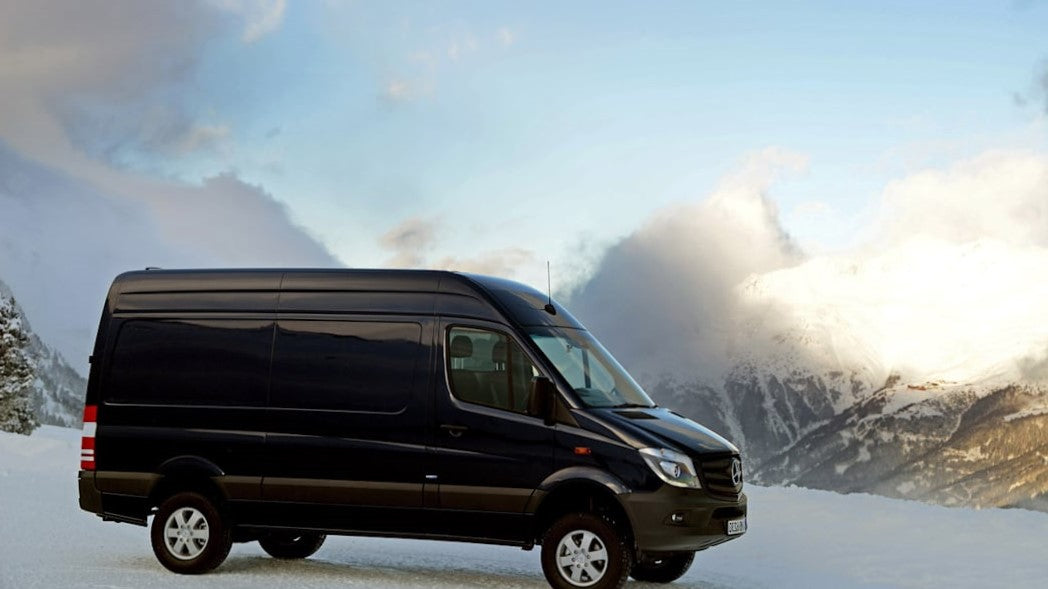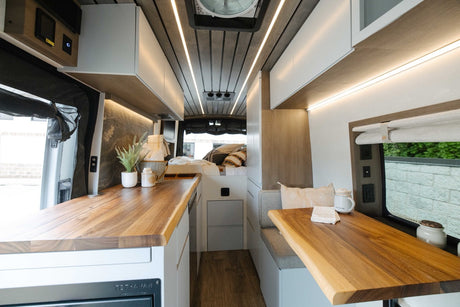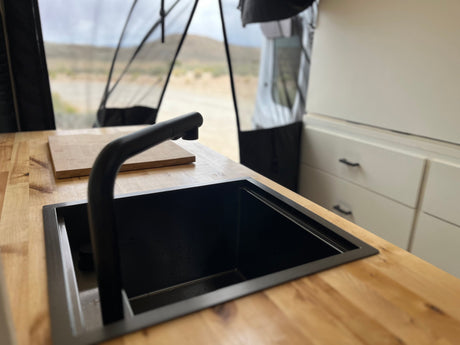
Without the right heating system, long winter nights can make four-season van life unbearably frigid. Especially up in the high mountain air where even summer nights get chilly. Brr! Luckily van heaters are way better these days.
But yikes, it’s a scary prospect. We’ve all heard horror stories of whole families found dead from carbon monoxide (CO) poisoning, killed overnight by improperly ventilated heaters. Getting the right heater set up safely is literally a matter of life and death.
No worries -- these days you can avoid the risks of open combustion altogether with the right heater. And you came to the right place for help choosing the best heater for your situation. So grab yourself a cup of coffee and a warm blanket and read on!
RV Heater Types
The two main types of RV heaters currently available are:
- Open combustion
- Sealed combustion
Open Combustion Propane Heaters
If not properly used, open-combustion propane heaters can cause carbon monoxide poisoning. Although many people have used these without incident, the consequences can be dire if you don't exactly follow all instructions for installation, ventilation, and operation.
Open combustion heater attributes:
- Older technology
- Separate propane fuel tank
- Exhaust gas not sealed
- Requires ventilation to outside
- Has pilot light which can go out
- CO detector needed for safety
- Multiple and larger body penetrations needed
- Can be noisy
Sealed Combustion Diesel Heaters
Sealed-combustion diesel air heaters do exactly what the name implies: the combustion chamber is sealed away from your breathing space, protecting you and your family from harmful exhaust gases.
Features of sealed combustion diesel heaters:- Newer technology
- Single fuel source: van's diesel fuel tank
- Exhaust sealed away from breathing space
- Fewer, smaller body penetrations needed
- Exhaust gases go outside
- Intake brings in fresh air
- No pilot light
- Much safer
- Quieter (especially with a muffler)
Sealed combustion heaters are MUCH safer because unburnt fuel doesn't exhaust into the van, there's no pilot light to go out, and sealed intake provides fresh air.
For most people, the choice is obvious. Why risk CO poisoning with a noisy heater that requires you to cut a bunch of big holes in your van? Yeah, no thanks.
Planar Heaters
Planar's sealed designs have simplified RV heating while significantly improving safety.

Planar Heater FAQs
Why haven’t I heard of Planar heaters?
Planar is the best-selling brand of RV heaters in the world, so you'll certainly hear a lot more about them now that we're finally catching up in the USA. They're quite popular in Canada -- where it's pretty cold, eh?
How does Planar compare to Webasto and Espar?
Webasto and Espar: German design, made in China. These more complex designs can have higher maintenance and service needs. Also really hard to get of these heaters or parts these days (and parts are expensive!).
Planar: Simple design, built to last. Full parts and service operation located in North America. Parts cost a fraction of Espar and Webasto parts.
Customers -- including mechanics and installers -- say Planar heaters last longer and don't require maintenance if you use good fuel and consistently run the heater on high setting.
Do Planar heaters have a high-altitude (HA) sensor?
Yes!
With some heater brands you have to switch out the fuel pump for high-altitude use, and for some others you have to manually change your altitude settings.
With Planar there's no switching out parts or fiddling with settings when you change altitude. The digital controller sensor simply reads the air pressure and auto-adjusts fuel supply incrementally. These more granular adjustments also minimize sooting inside the burner and optimize your heater's performance.
Speaking of performance, heating capacity of any heater drops at higher altitudes -- some more than others. With Planar, your maximum heating capacity drops by 5% for every 1600' (or 500m) beyond 6600' (or 2000m) above sea level. In other words, not much. For example at 9850' (or 3000m), maximum power from a Planar 2 kW heater is actually around 1.8 kW.
Why is Planar better?
Planar heater has several advantages:
- Mechanically-simple design
- Fewer parts means less to break
- If you use your Planar until a part eventually needs replacement, parts are easy to get (unlike Webasto and Espar!!)
- Reliable -- works under any circumstance
- Heavy-duty, solid, overbuilt
- Easy to maintain and repair
- Has remained available even during the pandemic -- currently shipping as soon as next day and up to two weeks (as of Dec 2021)
Can all Planar heaters be switched back and forth between diesel and kerosene for fuel?
Yes, you can use both diesel and kerosene and mix in any proportions, although kerosene is recommended for colder temperatures and/or at high elevations. The burn rate is the same, but kerosene burns cleaner.













